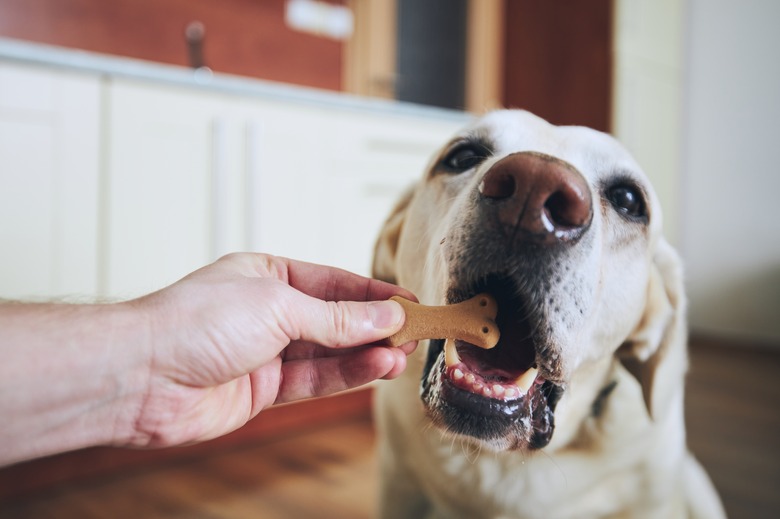How To Stop A Dog From Eating Birdseed
Dogs eat birdseed because they're either curious or hungry, and it's not dangerous in most cases. The best way to keep dogs from eating birdseed is to keep them away from it, make the area undesirable, or offer them an alternative. The seeds might seem like food to the dog, especially fi they are on the ground.
Some dog breeds are attracted to birds (such as hunting dogs and retrievers) and might initially be drawn to feeders because of the birds. Once the dog is there and the birds have been scared off, he might eat some tasty seeds. Learning how to keep dogs away from birdseed will help you prevent them from eating possibly moldy seed or seed balls laden with toxic fat.
Identify likely places
Identify
likely places
If your dog is eating seed from a feeder at your home, you'll know where to keep the dog from wandering. If the problem is that she gravitates toward seed anytime she can find it when you're away from the house, think about where there might be seed when you leave home and be prepared to keep her away from it.
For example, if you take her to a friend's house or leave her with a family member, ask that person if he has a bird feeder and let him know that you're trying to keep your dog away from birdseed. Where do you keep birdseed for your feeder? Instead of just keeping the bags on a shelf your dog can't reach, put the seed into a sealable plastic container so your dog won't smell it and be tempted to eat it.
Move the bird feeder
Move
the bird feeder
If the problem is at home, consider moving the feeder rather than trying to train your dog over the course of days or weeks and hoping he won't eat seed when you're not around. Remember that even if the feeder is out of the reach of your dog, he'll still be able to get at the seeds, shells, and husks that the birds drop on the ground, which might be interspersed with who knows what else.
Seed that lies on the ground can get moldy or breed a toxin called aflatoxin. Where there is dropped birdseed, there will likely be bird droppings, which can contain bacteria or parasites that can harm your dog.
If your neighbor has a bird feeder on her fence and the birds are dropping seeds into your yard, ask her to move the feeder. Let her know that birdseed and dogs don't mix and that your dog might get sick eating the seeds and other items mixed within them.
Sprinkle the ground with spices
Sprinkle
the ground with spices
Try sprinkling the ground around the seeded area with chili powder. It contains capsicum, which irritates a dog's nose. You might need to try this several times until your dog decides it's not a good idea to take a chance on whether she'll get a snootful today.
Talk to your vet before you do this to make sure it's OK and find out how much you should sprinkle. Your vet might recommend another repellent, such as an electronic motion sensor device that triggers a whistle, light, squirt of water, or other sound that will spook but not stress your dog.
Keep treats in your pocket
Keep
treats in your pocket
If your dog goes after seed during your walks, bring a few treats to give to him when you pull him away from the seed. Let the dog know that you don't want him eating seed by moving him away from the seed or using the "leave it" command.
Try putting some of it in your hand and then saying "no" or whatever other command you use to get your dog to stop a behavior. Put the seed back down and let the dog go near it. If the dog tries to eat it, pull him away and say "no" again. Repeat this until the dog decides not to go near the seed. When he does this, reward him with a caress, praise, and a treat.
Using positive reinforcement should have better long-term effects than yelling at your dog or using a negative touch. Negative reinforcement might only change a dog's behavior when you're around because the dog will want to avoid punishment. Once you're not around and the punishment is gone, the dog might go right back to her incorrect behavior.


